The Ultimate Guide to Going Direct to Consumer
Written by Chintan Zalani, Head of Content at The Ecom Academy
The world of Direct to Consumer is completely changing the Ecommerce landscape. For the first time in history, we’re seeing David sized brands explode onto the market to rival the Goliaths, and things aren’t showing signs of slowing…far from it.
What’s so amazing is that Direct to Consumer success has only been possible because of this perfect storm where it’s never been easier to launch a store, never be simpler to drive traffic or so seamless to fulfil orders.
Take Dollar Shave Club, for example, their brilliant videos could have worked on TV but…TV doesn’t take advantage or virality. Or perhaps Nectar Sleep, who skipped costly middlemen wholesalers while scaling toward a billion dollar valuation without a cent of venture capital by taking advantage of hyper-targeted ads on Facebook and Google AdWords. Then there’s Warby Parker who shook up one of the most insulated industries of eyewear, or perhaps AllBirds who literally fly-kicked their way into the footwear industry!
The impact is also very clear, as the % of GDP that is being chomped up by Direct to Consumer brands is getting bigger and bigger.
Below is a look at how the direct brand revolution is contributing to the U.S. GDP.

Even now with all these success stories, there are still plenty of moving parts you need to get right to really crack it…
If you’re considering launching a Direct to Consumer brand, or perhaps launching a Direct to Consumer arm of your business, this article will help outline some of the key parts to nail to make those D2C dreams come true!
To get started, let’s suss out the why…
Why are brands going direct to consumer (DTC)?
There are three primary reasons for the Direct to Consumer disruption eliminating the need of negotiating with a reseller to get your product to market. Here goes the first one.
1. Consumers are increasingly demanding a better customer experience. Direct to Consumer gives brands an opportunity to connect directly and deeply with their customers. You can impress your customer starting their first touch point and across the complete buying journey.
The report by PwC below shows how people in different geographies use it to decide between buying options.
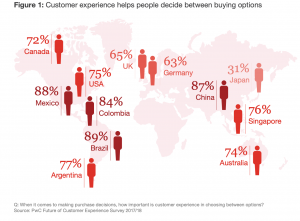
2. Direct to Consumer Brands can build a community around their product, which increases customer loyalty. And that’s a great way to improve your repeat transactions (one lever of the three for starting your Ecommerce growth machine).
3. With the removal of third-parties, you have direct access to consumer data. Customer intelligence is priceless. You can use the data to understand your customers’ behavior and serve them personalized offerings.
Now, that you have the skinny of the benefits, here’s how to carve your niche and kick off your Direct to Consumer business.
Establish an emotional connection with your audience through ‘intangibles’…
As a Direct to Consumer business, you are directly in touch with your customer. Instead of selling a million different products like Amazon, you specialize and sell commodities in a particular niche. However, communicating the tangible benefits of your product (like a lower price) isn’t a long-term business strategy.
Your differentiation is building a brand. You have the opportunity to forge a relationship with your audience. Let go of trying to sell on the needs associated with your product. Instead, focus on forming an emotional connection through intangibles. A few of these include:
1. Indulge your customers through engaging storytelling – The article how to start a brand covers creating the tactical steps to build a brand. However, to get customers emotionally invested in your brand, you need to create a compelling narrative around your brand.
For example, Harry’s prides itself on ‘fixing shaving.’ Their infomercial below (with founders Jeff and Andy as heroes) takes on Gillette as “one big razor company.”
Their story page also managed to snag a juicy number of backlinks. It goes to show that their brand has an emotional appeal.

2. Serve exciting and useful content – You don’t want your audience to visit your website solely when they wish to purchase products from you. It makes for a superficial relationship. You need to find out ways to fit in your customer’s lives more regularly.
One way is creating high-quality content. You can stay at the top of your customer’s mind and improve the overall buying experience. Emily Weiss shows the right way to do it. In 2010, she started her beauty blog Into The Gloss.
Four years after building an audience and a thriving community of her brand advocates, Emily launched Glossier, where she sold beauty products. It has snowballed, and last year, the company closed $52M in a fresh round of funding.
The brand regularly sees advocates shower praises for them on social media that results in unpaid and authentic marketing.

The results are possible because of a community of fashion enthusiasts that came together because of interesting content at Into The Gloss. The blog acts as an excellent channel for gaining customer insights. For instance, their post on ‘Dream Face Wash’ resulted in 382 comments!
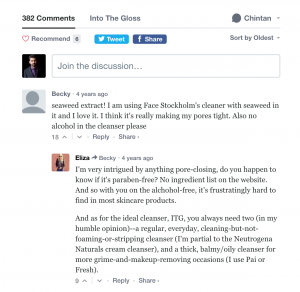
If you want to build a community of thriving fans on social media, then you can start a Facebook Group. Here are a few best practices that you should keep in mind while starting the group.
3. Invest in richer communication with your audience (through videos) – Does Amazon have the liberty of selling butt wipes with a video of Jeff Bezos? It’s such a simple commodity that it doesn’t make business sense for the CEO to come in front of the camera.
However, Dollar Shave Club (DSC) did just that with their second viral video. The founder of DSC, Michael Dubin, announced ‘One Wipe Charlies’ as the manly way to wipe.
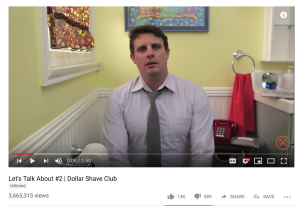
The DSC personality communicated by Mike in the video is authentic, funny, and relatable. Instead of meandering through various toilet paper products at the nearby store, the hilarious video compels me to try ‘One Wipe Charlies.’
With decreasing production costs, creating videos is a great strategy for your brand.
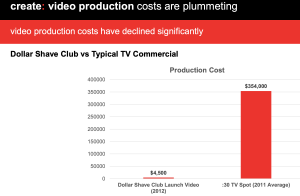
Basis your available resources, you can explore the above intangibles to form an emotional appeal with your “brand.”
Focus on the DNA of Direct to Consumer: Customer Experience
As a Direct to Consumer business, you’re in complete control of the buyer’s journey and hence, need to create a stellar customer experience. It builds prestige around your product offerings and gives you the luxury to charge a premium price for your products.
You need to think holistically on how you will transcend smoothly from online purchase to the shipment at the doorstep of your customer. Nail every touchpoint starting from discovery, conversion, and even post-purchase. Indeed, customer experience (CX) is more critical for Direct to Consumer then the products themselves.
PwC in its customer experience report highlights the ingredients of a good CX. They include speed, convenience, consistency, friendliness, and a big connector as the human touch.
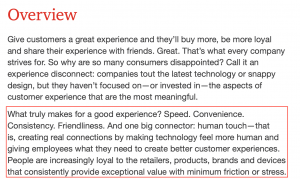
Here are a few ways to up your CX game and build confidence in the minds of your customers.
1. Think omnichannel and end-to-end – You need to understand the possible ways a prospect will enter your sales funnel. Then, basis the context, personalize your design and maintain consistency in your communication with the customer.
Consider the following scenarios and brainstorm on how you’ll handle each of them:
- You acquire the customer via social media ads vs. word-of-mouth referral,
- Has your customer bought your product on a mobile vs. laptop?
- Is the visitor interacting for the first time with your brand vs. have they already read a couple of articles on your blog?
To build trust, you need to optimize the complete buyer’s journey and make it hassle-free. Once a customer places an order with you, they anticipate its delivery. You can partake in their excitement with an attractive presentation of your product.
So strategize on the unboxing experience for your customer and how you can tell your brand’s story through the process.
As per the IAB Direct Brand report, brands need to traverse three miles, and the last one is ‘to the home.’
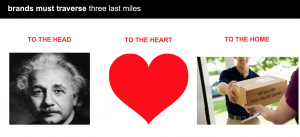
The visual stimuli are helpful in uplifting your brand perception. For a subscription business like Birchbox, MANY vloggers create unboxing videos every month. Hence, it makes even more sense to focus on building a seamless unboxing experience.
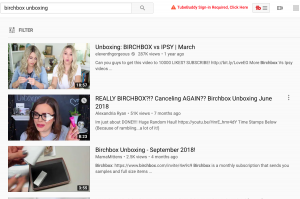
Here’s a detailed guide on unboxing by BigCommerce. And here’s another case study of how graze.com transitioned from etail to omnichannel that you could refer.
Lastly, when you think multichannel, don’t ignore Amazon. Even as a Direct to Consumer brand, you can leverage the biggest product search engine on the internet.
How about using the SEO superpowers of Amazon to generate leads for your products (list only a few of them)? Maybe, attempt to create a brand experience through Amazon stores that allow the creation of brand-specific landing pages.
As an example, GoPro is figuring out how to build more direct relationships with its customers. However, it still lists all of its inventory on Amazon.
2. Religiously focus on customer service – While it’s okay to practice a bit of automation, consumers increasingly expect real-time communication. You need to invest in the following categories of tools: help desk, live chat, and customer relationship management (CRM).
Once you have a stack of software ready, you can provide a great service to your customers. Bonobos relentlessly focused on cultivating a culture of quick responses on its support team that resulted in cutting down phone call response time under 30 minutes. And a 90%+ rate of “great” email ratings.

When you scale, don’t make this mistake (Hint: Stick with what you’re good at…)
With Direct to Consumer, less is more. If you are starting a new brand natively on digital, you might sell only ONE product. Your focus is on building a tribe around your offerings.
However, how do you scale a specialized and niche business?
You can directly lookout for new customers and play the volume game, but customer acquisition costs are high.
For a niche business, what often works better is serving new products to your existing customers. It makes sense as you directly communicate with your customer, can crunch data around their behavior, and gain more profound insights.
For example, Dollar Shave Club diversified its product line and started selling butt wipes as their second product. The idea wasn’t an industry trend. Instead, it was borne out of one of their consumer panels complaining about rough toilet paper. Goes to show the importance of the iterative model when developing new products!
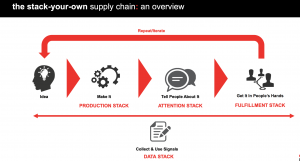
However, you also need to look for opportunities to broaden your community. There are many prospects eagerly waiting to engage with your brand but need a little outreach. Their interests align with your core customers. Hence, you need to re-evaluate whom you’re developing newer products for. Staying agile and receptive to feedback is the way to go.
Always remember though to remain true to the unique identity and value proposition that earned you your long-term raving fans.
Indeed you should involve these fans in your product development. Since you have an existing relationship, these fans will spread the word out about your new offerings to their friends and followers.
The referred customers (driven through one-on-one links on email or Messenger) have a level of pre-established trust. Here’s a guide on referral marketing by Sleeknote that you can use to implement referrals while scaling.
Alternatively, you could engage with micro-influencers in your niche. Frank Body collaborated with beauty bloggers and makeup artists encouraging them to share their authentic experiences of using the product.
Pura Vida also leveraged over 110k reps (micro-influencers) on Instagram to increase referral sales by 300%.

Conclusion
Big brands are slowly decaying. Digital channels offer you the opportunity to go directly to the consumer and engage. If you’re starting, then go digitally native. Else, use Direct to Consumer as a channel alongside other retailer partnerships.
Your customers and your bottom line will thank you.
What is your favorite example of a brand that has gone direct to consumer? Let me know in the comments below.
Companies our team has worked with:











